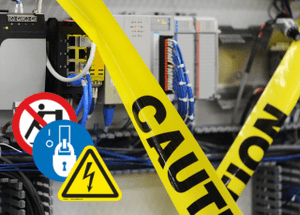Color Visuals and Workplace Safety

Color Visuals and Workplace Safety
Safety signage and
other visuals are vital for workplace safety. The colors used for visuals help
communicate a lot of information with just a quick glance. When you put signs
up around hazards, it’s important to use established standards that are likely
familiar to workers and visitors. Use established safety colors to meet legal
requirements and provide vital information to your employees.
Training on Safety Signage
When you hire new
employees, they should receive training on safety color codes and their
meanings. It’s important that all employees understand what all of the colors
mean, so they can be effective in designating hazards and safety risks. For
most employees, these color meanings will be familiar. Even outside of the
workplace, red and yellow are used to communicate danger. Traffic signals and
signs use these colors to direct the flow of traffic. Even in nature, the
colors red, orange and yellow are considered warnings for poison. If the colors
or what they are used for are ever changed, inform all employees formally and
in person.
OSHA Safety Colors
The Occupational
Safety and Health Administration is a government organization that sets
standards designed to help maintain healthy and safe working conditions in the
United States. Their standards address how each of the following should be
labeled:
- Caution
- Warning
- Danger
- Biological Hazards
Caution signs should include yellow, to indicate a potential risk. Warning signs are meant to be posted when there is a risk present, but it is not immediately threatening. Orange is used for warnings. Danger signs are urgent and communicate that a danger is present. Since it means there is an immediate risk, the color red should be used for signs and labeling. Biological hazards are designated by a red-orange or fluorescent orange color.
OSHA on Physical Hazards
Fire-related hazards
should be marked by the color red. From flammable materials to open flames, any
hazard that is related to fire is associated with the color red. Yellow is used
for a wide variety of hazards that include slipping, falling, being struck,
pinch points and more. These hazards are often found in warehouses.
ANSI Safety Colors
The American National
Standards Institute is not governmental, but it aims to provide unifying
standards that will ensure product quality and help the United States compete
in business globally. Their standards are widely used, though they are not
required. Red signals danger or means that workers should stop at this point.
Orange means there is dangerous equipment or machine parts that can crush, cut
or otherwise harm the people present. Yellow means that employees should be
cautious, and the sign typically explains what the potential hazard is.
Slipping, tripping or potential falling objects are some of the signs that use
this color. Green is used to mark emergency exits and items that are helpful in
the case of emergency. Blue is used for informational signs of various kinds,
not necessarily related to safety. Black and white are used for directional
signs that help direct people and traffic. Purple is used to warn for radiation
hazards.
ANSI Pipe Markings
Many pipes have
contents that could be potentially hazardous. Labeling them can help reduce
workplace risk in the case of a leak.
Pipe
markers
explain the safety concerns of the liquids or gases in pipes, so
workers know how to deal with leaks or burst pipes. Using colors to label
contents helps workers identify the contents at a glance, without having to
read text from a distance.
- Yellow is used for flammable contents
- Brown is used for combustible contents
- Red is used for contents that will quench a fire
- Green is used for pipes that hold water
- Orange is used for pipes with corrosive or toxic contents
- Blue is used for compressed air
This labeling system is especially valuable in workplaces with extensive piping.
Safety Colors Around the Workplace
The most prominent
place for safety colors is on signs and posters that are designed to be highly
visible throughout the workplace. Signs are large and should be easy to read
with minimal text. They should include safety colors or have them as a
background. For danger, warning and caution signs, you can include text that
offers more specific information on the risk present. For example, caution
signs can inform employees about specific protective equipment required in the
area, such as a hard hat or goggles. Posters are less official than signage,
but are larger and can fit more information. Safety markers can also be helpful
when applied to the floor. Marking tape and marking paint can help workers
identify safe places to stand. Floor markings can warn for specific points
where hazards begin. These signs, labels and more will help keep your employees
safe.
When you choose signage for the workplace, consider buying signs from safety experts who can guarantee that your signs and labels will use the correct colors and meet all other safety requirements. Clarion provides the safety products needed to meet OSHA requirements, warn employees about workplace hazards and provide instructions on the proper precautions to take to prevent injuries. Get in touch with our safety experts to learn more about how we can help improve your safety color signage.



